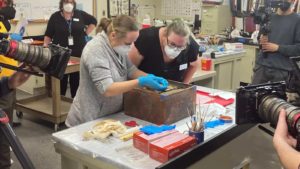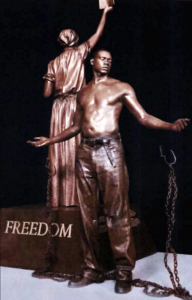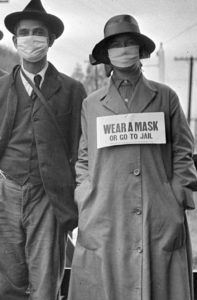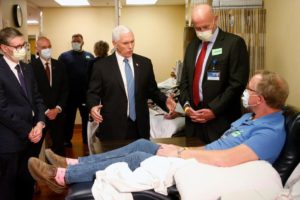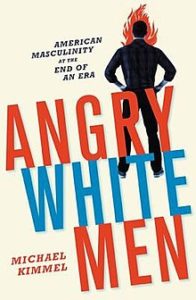The Republican debate this week of presidential candidates (minus Trump) began in an unusual way, with an exchange over a song, “Rich men north of Richmond,” by Oliver Anthony. The country-music-style song has hit the top of the Billboard charts, despite the singer being unknown. It’s an angry workingman’s anthem complaining about the “rich men” north of Richmond (i.e. politicians in Washington, D.C.) over low pay (overtime hours for bullshit pay), lack of respect (cause all this damn country does is keep on kickin’ them down), and control over people’s lives (they all just wanna have total control / wanna know what you think, wanna know what you do). There are also complaints familiar from right wing US politics such as welfare cheats (taxes ought not to pay for your bags of fudge rounds) and over-taxation (your dollar ain’t shit and it’s taxed to no end). Included as well are conspiracy theories such as the QAnon pedophilia story (I wish politicians would look out for miners / And not just minors on an island somewhere). Since then, the singer has insisted that his views have been misinterpreted (despite the song lyrics) and complained over the use of the song in the debate.
“Rich men north of Richmond” is not a call to action, but a cry of frustration:
Lord, it’s a damn shame what the world’s gotten to
For people like me and people like you
Wish I could just wake up and it not be true
But it is, oh, it is
The popularity of the song taps into the sense of grievance felt by many in the US that the mainstream economic, social, and political systems in the US are against them; a perspective that Donald Trump rode to the presidency in 2016.
Interestingly, this is the 60th anniversary of the “March on Washington for Jobs and Freedom” in 1963, led by Martin Luther King, Jr. Music was a big part of that event, with folk singers Joan Baez leading the crowd in “We shall overcome” and Bob Dylan singing protest songs such as “Only a pawn in their game”. The latter song was about the murder of civil rights activist Medgar Evers in Mississippi in 1963. The target of the song is racism, portrayed as leading not only to discrimination but to the existence of violent groups such as the Ku Klux Khan. Dylan portrays Medgar Evers’ assassin as a “pawn”, a poor white man manipulated by the “game” played by white supremacists:
But the poor white man’s used in the hands of them all like a tool
He’s taught in his school
From the start by the rule
That the laws are with him
To protect his white skin
To keep up his hate
So he never thinks straight
‘Bout the shape that he’s in
But it ain’t him to blame
He’s only a pawn in their game
As in Oliver Anthony’s song, politicians too are to blame:
A South politician preaches to the poor white man
“You got more than the blacks, don’t complain
You’re better than them, you been born with white skin, ” they explain
And the Negro’s name
Is used, it is plain
For the politician’s gain
As he rises to fame
And the poor white remains
On the caboose of the train
The persona in Oliver Anthony’s song is part of the aggrieved population (people like me and people like you); the emphasis is on victimhood – we are being trodden down by the elites. Dylan’s perspective is less personal, from the outside, reporting on injustice, calling for civic engagement. The most widely sung protest song of the 1960’s was “We shall overcome”, which invites the singers to celebrate solidarity with all groups and to believe in a future better, more just world. That reflects Dr. King’s message from the March on Washington, a vision of a society free of racial prejudice: I have a dream that my four little children will one day live in a nation where they will not be judged by the color of their skin but by the content of their character. The March on Washington was instrumental in leading just months later to new civil rights legislation. The sentiment expressed in “Rich men north of Richmond” may or may not be harbinger of things to come but it certainly has resonated widely in the US. It remains to be seen whether that might lead to an aggrieved former president finding enough support to reclaim the White House.




